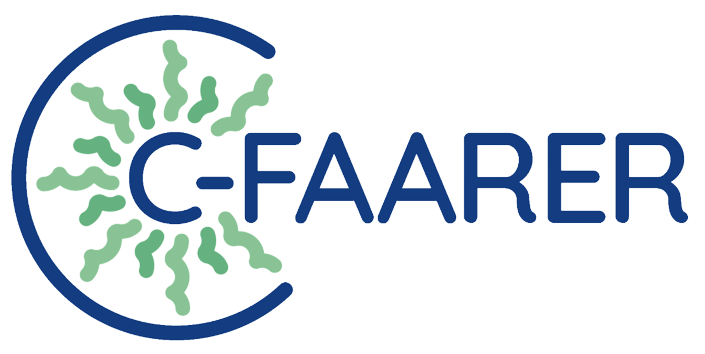Coolblue's Manifesto: A Blueprint for Regenerative Ocean Farming and Its Application to C-FAARER
Coolblue is at the forefront of promoting regenerative ocean farming, a practice that not only produces food but also actively restores marine ecosystems. Their manifesto outlines a comprehensive approach to sustainable and community-driven aquaculture. This blog post explores how Coolblue's principles align with and can be applied to the C-FAARER project, which focuses on developing new business models for regenerative aquaculture in the Atlantic and Arctic sea basins. Readers can take this as an example and apply Coolblue’s Manifesto to their own business operations.
Coolblue's Manifesto
Coolblue's manifesto is built on eight transformative principles aimed at creating a sustainable and regenerative future for ocean farming:
1. We Produce Food
Coolblue combines aquatic food production with ecosystem services like nutrient absorption and carbon dioxide binding, ensuring that food cultivation also benefits the environment.
2. We Cultivate on the Ecosystems' Own Terms
The cultivation process uses only native resources and avoids artificial methods, supporting local genetic diversity and minimizing environmental impact.
3. We Do Multi-Trophic Cultivation
By cultivating multiple species that benefit each other, Coolblue promotes biodiversity and counteracts the negative effects of monoculture.
4. We Counteract Climate Change
Coolblue's practices support the decarbonization of food systems by providing climate-friendly ingredients and planning production cycles with low-emission targets.
5. We Create Robust Business Models
The integration of regenerative cultivation with other income-generating activities creates robust business models that support local economies and employment.
6. We Take Active Part in Our Communities
Coolblue emphasizes community engagement, aiming to collaborate with and contribute to local residents, businesses, and civil society.
7. We Scale Out Rather Than Up
Coolblue focuses on establishing small cultivation sites to avoid large-scale environmental impacts, sharing infrastructure to achieve economies of scale.
8. We Rely on Knowledge
Scientific approaches and collaboration with knowledge institutions guide Coolblue's practices, ensuring informed decision-making and continuous improvement.
Application to C-FAARER
The C-FAARER project shares many of Coolblue's values and principles, making the manifesto highly applicable. Here’s how Coolblue's principles can be integrated into C-FAARER:
1. Regenerative Food Production
Like Coolblue, C-FAARER aims to develop regenerative aquaculture systems that produce food while restoring ecosystems. This includes cultivating species that clean and oxygenate the water, stabilize sediments, and provide habitats for other species.
2. Ecosystem-Based Cultivation
C-FAARER can adopt Coolblue's approach of using native resources and avoiding artificial methods, ensuring that cultivation practices support local biodiversity and ecosystem health.
3. Multi-Trophic Systems
By embracing multi-trophic cultivation, C-FAARER can enhance biodiversity and create more resilient marine ecosystems, similar to Coolblue's practices.
4. Climate Change Mitigation
C-FAARER's focus on climate-positive aquaculture aligns with Coolblue's efforts to decarbonize food systems. Both projects aim to provide low-emission, high-quality food alternatives.
5. Robust Business Models
C-FAARER can benefit from Coolblue's model of integrating regenerative practices with other income-generating activities, creating sustainable business models that support local economies.
6. Community Engagement
Both Coolblue and C-FAARER emphasize the importance of community involvement. C-FAARER can adopt Coolblue's strategies for engaging with local communities, promoting ocean literacy, and fostering regenerative thinking.
7. Scaling Out
C-FAARER can follow Coolblue's principle of scaling out rather than up, establishing numerous small-scale cultivation sites to minimize environmental impact and share resources.
8. Knowledge and Collaboration
C-FAARER's roadmap and guidance, co-designed with stakeholders, reflect Coolblue's commitment to scientific approaches and knowledge sharing. Collaboration with knowledge institutions can help both projects make informed decisions and continuously improve their practices.
Sign the Pledge
Join them in their mission to create a regenerative future for our oceans. Sign the pledge today and become part of the movement for a Cool Blue Future. Together, we can make a difference.
About Coolblue
Cool Blue Future promotes community-led regenerative ocean farming in the Baltic and North Seas through projects like Cool Blue Nordic and Cool Blue Baltic. These initiatives focus on low-trophic cultivation, ecosystem restoration, and local job creation. By emphasizing education, community activism, and business development, we aim to transform ocean farming into a regenerative, community-driven industry.
Search the Blog….
Visit us on Instagram
















